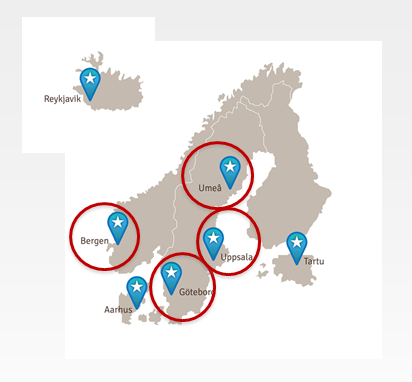Long-term lung health effects of air pollution
Ane Johannessen is the project leader for Life-GAP, a research project that begins in July 2020. This week Johannessen led an administrative kick-off meeting at CIH.

Hovedinnhold
Air pollutions is a heavy societal burden
Johannessen explains that today outdoor air pollution causes more than 4 million deaths each year and inflicts a heavy morbidity burden on society. Recent results from her research group, however, indicate that also air pollution exposures well below today’s recommended limit values may have severe health effects if the exposure lasts over a longer time period or across generations.
It is this question that Johannessen and colleagues aim to address in her new project Life-GAP, that has received 18 million NOK funding from the Research Council of Norway (RCN) and UiB. The project period lasts until December 2025.
Addressing the unknowns
The Lifespan and inter-generational respiratory effects of exposures to greenness and air pollution, Life-GAP, research project is the first such project designed to investigate such a large timespan. It aims to take air pollution research to the next level. The project hopes to find answers to 3 questions in particular:
- Do air pollution exposures harm health through extensive long-term effects (during the lifespan and across generations)?
- May even low pollution levels be harmful for our health?
- What are the health effects of exposure to greenness?
The project will use data from the Respiratory Health in Northern Europe (RHINE) study. This is a large population-based questionnaire cohort study with a 30-year follow-up being conducted in 2020-21. Data from RHINE will be merged with data from national registries (cause of death, birth-, prescription- and hospital data), and with air pollution and greenness data assigned to each participant far back in time based on residential address history.
Some preliminary conclusions
Preliminary analysis of the data reveals thus far that:
- Air pollution exposure in a general population is associated with sick leave 20 years later.
- In a population with relatively low air pollution exposure, exposure 20 years ago may be more important than current exposure and exposure 10 years ago.
- Even low air pollution levels have adverse health effects over time.
